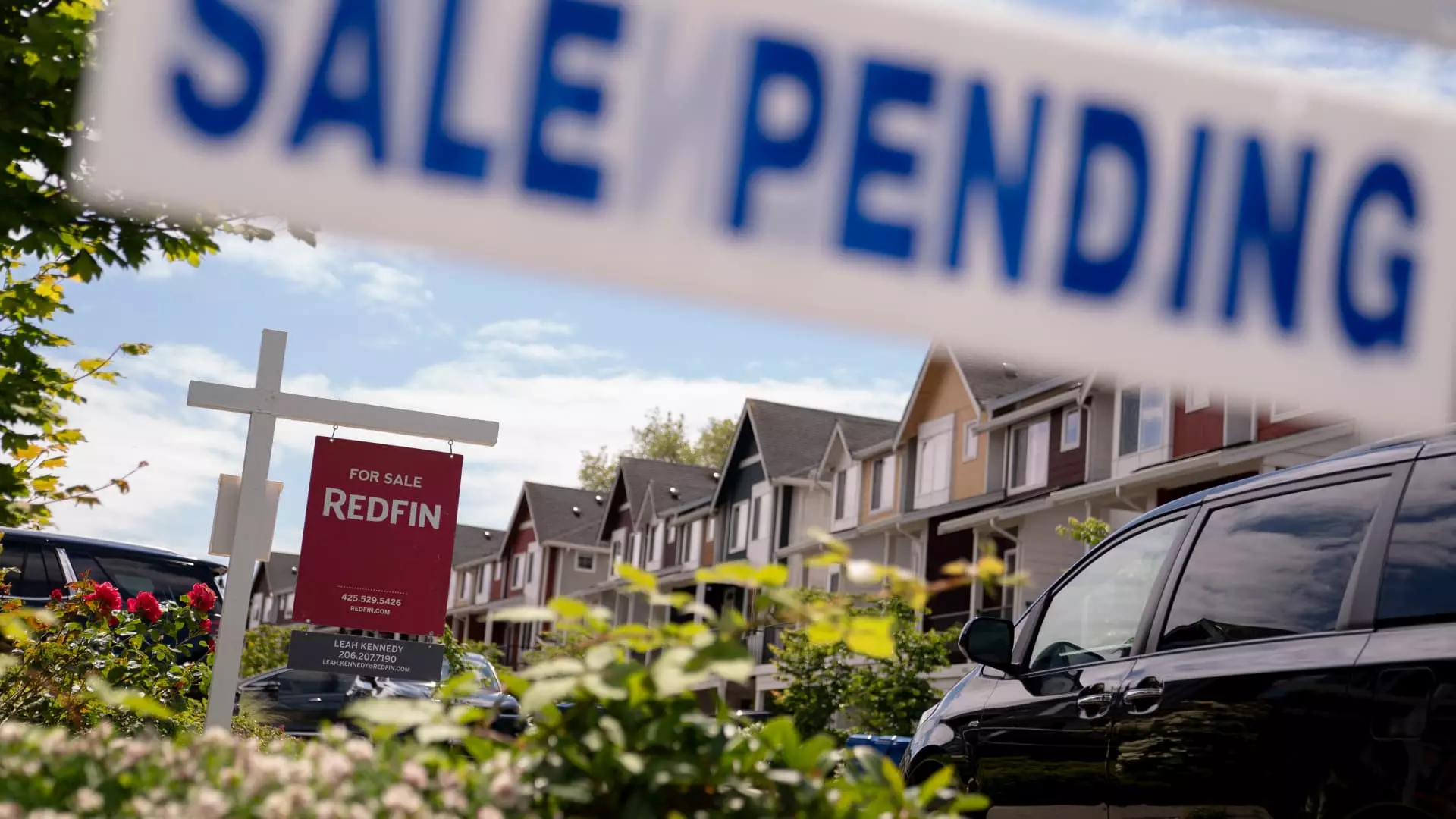The landscape of the housing market is shifting dramatically. Last week, mortgage rates reached their highest point since February, marking a significant turning point that has left many potential homebuyers feeling vulnerable and uncertain. The implications are profound; as per the Mortgage Bankers Association, total mortgage application volume plummeted by a staggering 8.5% relative to the previous week. This downward trend illuminates the anxiety rippling through the market, suggesting that prospective buyers are being forced to reckon with decisions they may not feel entirely comfortable making.
It’s no longer just a simple matter of interest rates rising. We are witnessing the emergence of a behavior-driven market where homebuyers are seeking out riskier loans—adjustable-rate mortgages (ARMs)—to tackle the financial challenges presented by these inexorably escalating rates. This shift speaks volumes about the precariousness of the current climate, where fear is leading to decisions that may not align with sound financial principles.
Historical Comparisons: The Market’s Discrepancy
Worryingly, while applications for purchasing homes decreased by 5% last week, they still surpassed the numbers from the same week a year prior by 13%. However, such a year-on-year improvement feels hollow when juxtaposed against the context of heightened inventory levels. Current statistics indicate a 30% uptick in active housing stock compared to last year, which should ideally translate into stronger sales. Here lies the core issue: if demand is higher and inventory is ample, why are homebuyers retreating? The answer lies in the psychological impact of economic uncertainty and rapid rate fluctuations, compelling buyers to hesitate even when conditions seem favorable.
This reality can’t be dismissed simply as market dynamics; it’s deeply entrenched in the very fabric of consumer confidence. Home prices, which have risen noticeably over the past year, are forcing buyers to reconsider their financial strategies in the face of elevated monthly payments.
Adjustable-Rate Mortgages: A Risky Compromise
In a bid to navigate these tumultuous waters, many prospective homeowners are turning to ARMs, which, while providing lower initial rates—hovering around 6% in recent surveys—also carry the painful burden of future adjustment risks. The implications of opting for ARMs are significant; borrowers may find themselves exposed to fluctuating interest rates that could severely impact their financial stability down the line. In fact, the share of ARMs surged to 9.6%—the highest since November 2023—demonstrating that for many, the allure of lower initial payments outweighs the inherent risks.
Admittedly, seeking out ARMs might look appealing on the surface, but the fundamental question remains: is it truly in the best interests of the homeowner? Or is it merely a short-term remedy for a longer-term financial ailment? The data reflects a crucial narrative where almost a quarter of application volume stemmed from ARMs—a signal that desperation could be prompting decisions that complicate financial futures.
The Refinancing Dilemma
Even with declining rates, refinancings took a nosedive last week, plummeting by 12%—albeit remaining 68% higher than a year prior. This juxtaposition presents an awkward conundrum for homeowners who may be sitting on loans with historically lower interest rates. The landscape is precariously positioned; while many borrowers could benefit from refinancing, the sinking confidence and market volatility are holding them back.
Experts warn that the return of calmness to the markets doesn’t assure stability—the looming specter of volatility continues to haunt. This unsettling reality challenges the notion that one can simply sit back and wait for the situation to resolve. The ever-shifting market creates a sense of urgency; the time for action may be now, but what action is prudent remains shrouded in uncertainty.
As we navigate these turbulent times, it becomes increasingly clear that the housing market is intricately connected to wider economic trends, creating a landscape fraught with challenges and difficult decisions for the average American homebuyer. This environment requires a discerning eye and a precautionary mindset as both first-time buyers and seasoned homeowners grapple with the implications of increasingly volatile mortgage rates.


Leave a Reply